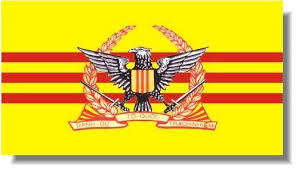
“Chúng ta đều là người Việt và đă đến Đức để xây dựng một cuộc sống tốt đẹp hơn”
Sau khi Chiến tranh Việt Nam kết thúc, hàng ngàn người đă đến Đức với tư cách là người tị nạn hoặc lao động hợp đồng. Một dịp kỷ niệm gần đây đă khơi gợi nhiều suy ngẫm.
Berlin, Đức – Năm 1979, Kien Nghi Ha sống cùng cha mẹ và chị gái 12 tuổi trong một căn hộ một pḥng ngủ tại Hà Nội. Cha mẹ anh là công nhân điện làm việc ở một nhà máy điện.
Họ dùng chung nhà vệ sinh và khu bếp ngoài trời với các hàng xóm. Một người hàng xóm – một bà cụ lớn tuổi – thỉnh thoảng trông nom Ha (lúc đó mới 7 tuổi) và chị gái anh.
Anh vẫn nhớ cảm giác mát lạnh của nền gạch men giữa mùa hè nóng nực. Ha thường nằm dài trên sàn, lắng nghe tiếng ồn ào của đường phố và thỉnh thoảng là tiếng xe điện vang lên từ phía sau cánh cửa sắt xanh.
Bốn năm trước đó, vào năm 1975, lực lượng cộng sản miền Bắc đă đánh bại các chiến binh được Hoa Kỳ hậu thuẫn ở miền Nam, thống nhất đất nước dưới một chế độ đơn đảng – vẫn c̣n tồn tại đến nay.
Ha là người gốc Hoa – thuộc nhóm thiểu số Hoa Kiều – vốn đặc biệt dễ bị tổn thương trong giai đoạn hậu chiến. Anh nhớ lại việc nhiều bạn bè quay lưng với ḿnh sau khi Việt Nam tấn công Campuchia năm 1978 (khi ấy là đồng minh của Trung Quốc) v́ nguồn gốc dân tộc của anh.
“Một số đứa c̣n ném đá tôi. Tôi rất sốc và lúc đó không hiểu chuyện ǵ đang xảy ra,” Ha kể lại.

Tị nạn sang Tây Berlin
Gia đ́nh Ha quyết định ra đi. Cha mẹ anh bán hết tài sản và lên đường bằng tàu vượt biển đầy nguy hiểm tới Hồng Kông. Dù không có ǵ đảm bảo an toàn, ước tính khoảng 2 triệu người đă rời Việt Nam theo cách này.
Vào thời điểm đó, những người lo sợ tương lai dưới chế độ mới có thể lựa chọn định cư ở một trong ba quốc gia: Tây Đức, Úc hoặc Hoa Kỳ. Tuy nhiên, lựa chọn này nhanh chóng bị thu hẹp. Khi người chú của Ha rời Việt Nam ba tháng sau, ông chỉ c̣n có thể sang Mỹ.
Cha mẹ Ha chọn Tây Đức v́ tin rằng nước này có sự cân bằng tốt hơn giữa công việc và cuộc sống so với Mỹ.
Việt Nam lúc đó chia cắt như nước Đức: miền Bắc Việt Nam được Đông Đức (GDR, thân Liên Xô) hậu thuẫn; c̣n miền Nam được Tây Đức (thân phương Tây) ủng hộ.
Gia đ́nh Ha đến Hồng Kông rồi tiếp tục bay đến Frankfurt, sau đó tới sân bay Tegel ở Tây Berlin. Tại đây, các nhà báo đă chờ sẵn để ghi lại khoảnh khắc Đức chào đón những “thuyền nhân”.
“Tôi không nhớ nhiều về lúc đến nơi, nhưng tôi nhớ có rất nhiều phóng viên muốn chụp h́nh chúng tôi,” Ha nói.
Gia đ́nh anh được bố trí sống tại khu nhà ở xă hội gần bức tường Berlin – nơi sinh sống của hàng ngàn người. Cha anh làm công nhân vận tải, mẹ anh làm nhân viên vệ sinh tại nhà trẻ.
So với các khu nhà ở khác thời đó, căn hộ của họ được xem là tốt: có hệ thống sưởi trung tâm, nhà vệ sinh riêng.
Tuy nhiên, việc thích nghi không hề dễ dàng. Ha cảm thấy cô lập v́ là một trong số ít trẻ em thuộc dân tộc thiểu số tại trường tiểu học.
Một hành tŕnh khác: Người lao động từ Đông Đức
Chỉ vài tháng sau khi chiến tranh kết thúc, Việt Nam thiết lập quan hệ ngoại giao với Đông Đức. Điều này mở ra một con đường khác cho Huong Mai* – vài năm sau cô rời Hà Nội, quá cảnh ở Moscow, rồi đến sân bay Schönefeld ở Đông Berlin.
Lúc đó 21 tuổi, cô là một trong những nhóm lao động hợp đồng đầu tiên, làm việc trong một nhà máy sản xuất ly uống nước.
Nay đă 64 tuổi, Mai có một người con trai 27 tuổi và đang quản lư một cửa hàng vải tại thị trấn nơi cô định cư từ thời Đông Đức. (Cô yêu cầu dùng tên giả v́ lư do riêng tư).
Ngày 30/4/2025, Việt Nam đánh dấu 50 năm kết thúc chiến tranh. Với cộng đồng Việt – Đức đông đảo gồm người tị nạn và lao động hợp đồng, dịp này khơi gợi nhiều suy tư.
“Cha tôi từng kháng chiến chống Pháp, anh trai tôi th́ chống Mỹ. V́ vậy, với tôi, kết thúc chiến tranh mang ư nghĩa lớn – bởi máu của gia đ́nh tôi đă đổ xuống trong tất cả các cuộc chiến đó,” Mai chia sẻ.
Anh trai cô cũng sang Đức một ḿnh vào những năm 1990, gia đ́nh anh đến sau vào năm 2009.
Thế hệ tiếp nối ở nước Đức thống nhất
Con gái anh trai Mai – Dieu Ly Hoàng (26 tuổi) – hiện sống tại khu Prenzlauer Berg, cùng khu với Ha. Đây là khu trung lưu của Berlin, nổi bật với quán cà phê, nhà hàng sang trọng, pḥng yoga và cộng đồng người nước ngoài nói tiếng Anh nhiều hơn tiếng Đức.
“Việc hiểu được hành tŕnh của gia đ́nh tôi rất quan trọng với tôi. Tôi biết ḿnh may mắn v́ không phải trải qua di tản, và tôi không thể tưởng tượng nổi ông bà tôi đă phải chịu đựng những ǵ,” Ly – hiện là nhà sử học nghệ thuật – chia sẻ.
“Tôi ghi nhận sự hy sinh của họ khi rời quê hương để tôi được sinh ra và sống trong ḥa b́nh.”
Ha, nay 53 tuổi, có hai con trai, là nhà nghiên cứu hậu tiến sĩ tại Đại học Tübingen, chuyên ngành cộng đồng người Việt tại Đức. Anh có bằng tiến sĩ về nghiên cứu văn hóa.
“Hiện nay đang có một cuộc thảo luận trí tuệ và văn hóa rất mạnh mẽ. Chúng tôi cố gắng lư giải lịch sử và hiểu lịch sử đó có ư nghĩa ǵ đối với người Việt đang sống tại Đức,” Ha nói.
“Những câu hỏi xuất hiện trong các cuộc tṛ chuyện, bài báo, sách và tác phẩm nghệ thuật. Biết nhiều hơn về lịch sử giúp chúng tôi hiểu rơ hơn bản thân trong xă hội Đức, v́ chúng tôi có thể kết nối quá khứ với hiện tại.”
Hai ḍng người hội tụ
Ước tính có khoảng 35.000 người tị nạn đến Tây Đức năm 1979, trong khi 70.000 lao động hợp đồng đến Đông Đức từ năm 1980.
Khi nước Đức thống nhất năm 1990, hai cộng đồng này – dù khác biệt – đă cùng tồn tại trên một lănh thổ.
“Ở Đông Đức, người ta tự hào về t́nh đoàn kết quốc tế, đồng thời căm ghét phương Tây tư bản. Trong khi đó, chính phủ Tây Đức lại xem chiến tranh Việt Nam là một phần của cuộc chiến toàn cầu chống cộng sản,” – nhà sử học người Đức Andreas Margara giải thích.
Ly cho biết, một số người thân của cô vẫn nhận ra khi nghe giọng miền Nam.
“Họ không phản ứng tiêu cực, nhưng sẽ nói kiểu như ‘À, người này là người miền Nam’. Họ không đào sâu hơn, nhưng tôi cảm nhận được có sự phân biệt nào đó – bởi v́ có một quá khứ tồn tại ở đó.”
“Thế hệ cha mẹ tôi, bao gồm cả cựu chiến binh, không có không gian để gặp nhau, chia sẻ trải nghiệm, và hiểu nhau hơn.”
Tuy nhiên, Ly tin rằng nước Đức thống nhất có thể là “một không gian cho sự ḥa giải.”
“Thế hệ tôi có nhiều cơ hội và không gian hơn để đối thoại,” cô nói và kể về cuộc gặp gần đây với một sinh viên người Việt – Đức học ngành lịch sử nghệ thuật – và đă có rất nhiều điều để chia sẻ.
Mai đồng ư rằng cô ít có cơ hội gặp người miền Nam, nhưng không có ác cảm:
“Mặc dù Việt Nam đă chịu nhiều tổn thất, chúng ta đều là người Việt và đă đến Đức để xây dựng một cuộc sống tốt đẹp hơn cho bản thân,” bà nói.
Nguồn: Al Jazeera

Ha, then seven, pictured on the day he arrived with his family to West Berlin in 1979 after a trip via boat and plane [Courtesy: Kien Nghi Ha]
‘We are all Vietnamese and came to Germany to build a better life’
After the Vietnam War ended, thousands travelled to Germany as refugees or migrants workers. A recent anniversary has stirred a sense of reflection.
Berlin, Germany –*In 1979, Kien Nghi Ha lived in Hanoi with his parents, who worked as electricians at a power plant, and his 12-year-old sister in a one-bedroom apartment.
They shared the toilet and an outdoor kitchen area along with their neighbours. One of them, an elderly woman, would sometimes look after Ha, then seven years old, and his sister.
He remembers the cool, smooth tiled floor offering comfort during the blistering summer heat. He would lie on it listening to the lively street noise and occasional sound of a tram beyond a green steel entrance door.
Four years earlier, in 1975, North Vietnamese communist forces had defeated United States-aligned fighters in South Vietnam to take the whole country under a one-party system that remains in power today.
Ha was part of an ethnically Chinese mixed Hoa Kieu minority. Communities like his, especially in the early post-war years, felt vulnerable.
He remembers how children turned away from him after Vietnam invaded Cambodia, then an ally of China at that time in 1978, because of his heritage.
“Some even threw stones at me. This was very shocking, and I didn’t understand at that time what was going on,” he said.
The family decided to leave. His parents sold their valuables and embarked on a dangerous and costly trip by boat to Hong Kong. Despite no guarantees of safety, an estimated two million people would ultimately leave this way.
At that time, those who feared for their future under the new Communist authorities could choose to resettle in one of three countries – West Germany, Australia or the United States.
The choice was not available for long. When his uncle left Vietnam just three months later, people were only allowed to migrate to the US.
Ha’s parents opted for West Germany as they believed it offered a better work-life balance than the US.
The fractures in Vietnam mirrored divisions in Germany, with North Vietnam backed by the USSR-aligned East Germany, officially known as the German Democratic Republic (GDR), and the capitalist West Germany supporting South Vietnam.
After arriving in Hong Kong, the family travelled by plane to Frankfurt and then on to Tegel airport in West Berlin, where journalists were waiting, eager to document the country welcoming so-called “boat people”.
“I don’t recall much from the arrival, but I do remember many journalists there wanting to take pictures of us,” Ha said.
The family were provided an apartment within a social housing complex where thousands of people lived near the Berlin Wall on the west side. His father became a transport worker, while his mother was a cleaner in a children’s nursery.
Compared with other social housing at the time, Ha says, the flat was in good condition, with central heating and individual toilets.
But the transition was not easy. Ha felt isolated as one of the only children from a minority background in his primary school.
A different path
Within months of the war’s end, Vietnam signed diplomatic relations with the GDR, paving a different kind of path for Huong Mai* to fly overseas a few years later.
At 21, she left Hanoi for Moscow and then travelled to Schonefeld airport in East Berlin. She was among the first groups of contract workers and was soon employed at a factory that made drinking glasses.
Now aged 64, Mai has a 27-year-old son and runs a textile shop in the town where she has lived since she arrived in the GDR. Mai requested Al Jazeera uses a pseudonym to tell her story, for personal privacy reasons.
On April 30, Vietnam marked 50 years since the end of the war. For the large Vietnamese-German diaspora, who arrived as refugees and contract workers, this year’s milestones have stirred a sense of reflection.
Mai said she felt joy on the anniversary.
“My father resisted against the French colonialists, and then my older brother fought against the Americans. So, for me, the end of this war is very meaningful because of the blood that was shed by my family in all of these wars,” she said.
Her brother followed in her footsteps, arriving in Germany in the 1990s alone. His family joined him two decades later, in 2009.
His daughter, 26-year-old Dieu Ly Hoang, now lives in Prenzlauer Berg, which is coincidentally the same neighbourhood as Ha. It is a sought-after area of the German capital, formerly in the GDR, now home to cosy cafes, posh restaurants, yoga studios and affluent expatriate families where English is heard on the streets more often than German.
“It’s been a very important aspect for me to see what my family went through, and how resilient they have been. I know I’m very lucky not to have experienced an evacuation and I can’t imagine what it was like for my grandparents,” Ly said, as she recalled hearing stories about the wartime rations of rice.
“I acknowledge the sacrifices they made to migrate for a better life so that I could be born and live in peace,” said Ly, an art historian.
Ha, now 53 and a father to two sons, is a postdoctoral researcher in the Asian German diaspora at the University of Tubingen and holds a PhD in cultural studies. Friendly, open and knowledgeable of the complex history he is a part of, Ha also said the commemorative events have felt significant.
“There’s an intellectual and cultural discussion going on through which we are trying to make sense of this history and what this history means for us living in the German-Vietnamese diaspora,” he said.
“Questions pop up in private and public conversations, articles, books, and artworks. And knowing more about this history will improve our sense of self in German society, because we are able to discover more about a past that we, the younger generations, didn’t experience on a personal level. This allows us to connect the past with the present.”
An estimated 35,000 refugees arrived in West Germany in 1979, while 70,000 contract workers began to arrive in the GDR in 1980.
When Germany unified in 1990, it brought together, at least physically, two communities.
“In the GDR, people were proud to show international solidarity, and this went hand in hand with hatred of the capitalist West, while the West German government saw the Vietnam War as part of the global struggle against communism,” explained German historian Andreas Margara.
Ly said some of her relatives still mention it when they hear a southern Vietnamese accent.
“They do not become stressed nor do they act differently, but they notice the accent verbally, like ‘Oh, this person is from the south’. They do not go further into details, but I can feel a certain differentiation there because there is this history there. My parents’ generation, including people like war veterans, don’t have the spaces in the diaspora to meet, share their experiences and understand each other more,” she said. “Unified Germany, though, can be a space for more reconciliation.”
She added that her generation has “more chances and spaces for dialogue” as she recalled recently meeting a Vietnamese German art history student and having plenty about which to talk.
Mai agreed that there are not many opportunities in her life to meet southerners, yet she feels no animosity.
“Even though Vietnam has been damaged a lot, we are all Vietnamese and came to Germany to build a better life for ourselves,” she said.
SOURCE:*AL JAZEERA





























 :an imated-applause-s
:an imated-applause-s

